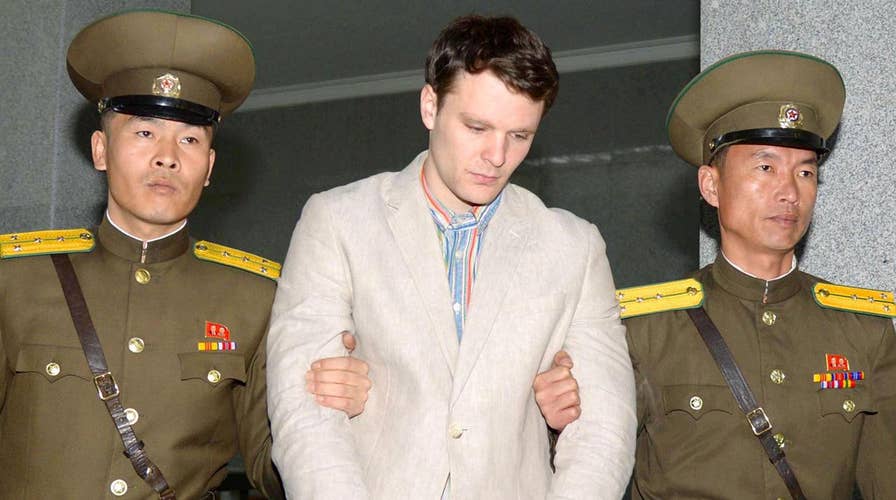Otto Warmbier dies one week after release from North Korea
US student Otto Warmbier, who was held prisoner in North Korea, has died after returning home to Ohio with a neurological injury
A day after the death of an American college student who was detained in North Korea for more than a year, the United States flew a pair of supersonic bombers over the Korean Peninsula in a show of force, South Korean officials said.
The U.S. often sends powerful warplanes in times of heightened animosities with North Korea, and flew B-1B bombers several times this year as the North conducted a series of banned ballistic missile tests.
Tuesday’s flights by B-1Bs came shortly after the death of Otto Warmbier, who was recently released by North Korea in a coma following more than 17 months of captivity.
"Lot of bad things happened," President Trump said Monday, “but at least we got him home to be with his parents."
He added: "It's a brutal regime -- and we'll be able to handle it."
Seoul’s Defense Ministry said the bombers engaged in routine exercises with South Korean fighter jets aimed at showing deterrence against North Korea.
The U.S. military said the bombers conducted two separate drills with the Japanese and South Korean air forces. It said the flights demonstrated solidarity among South Korea, Japan and the United States “to defend against provocative and destabilizing actions in the Pacific theater.”
The United States stations tens of thousands of troops in South Korea and Japan.
The family of Warmbier said the 22-year-old died Monday, days after his release from North Korea. Analysts said his death would likely cast a shadow on relations between the U.S. and North Korea and compound efforts by South Korea’s new liberal president to improve ties with the North.
The Associated Press contributed to this report.





















